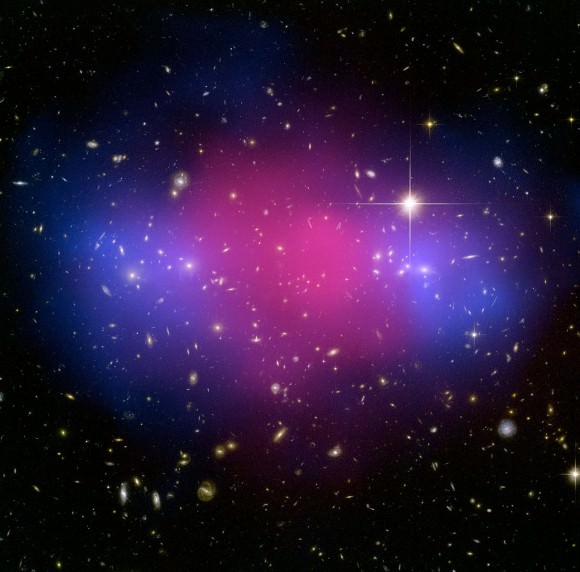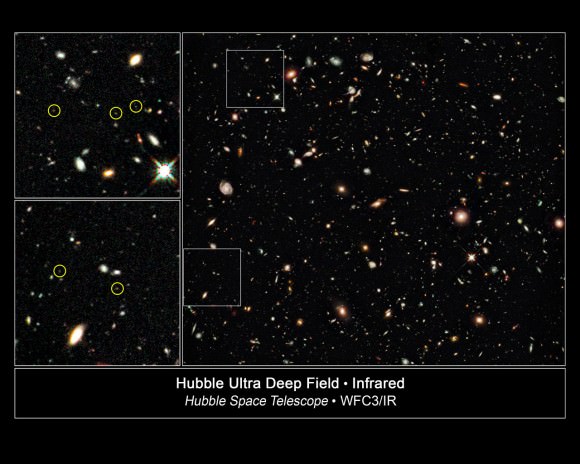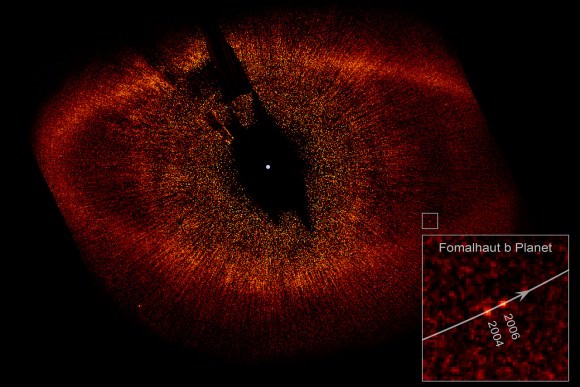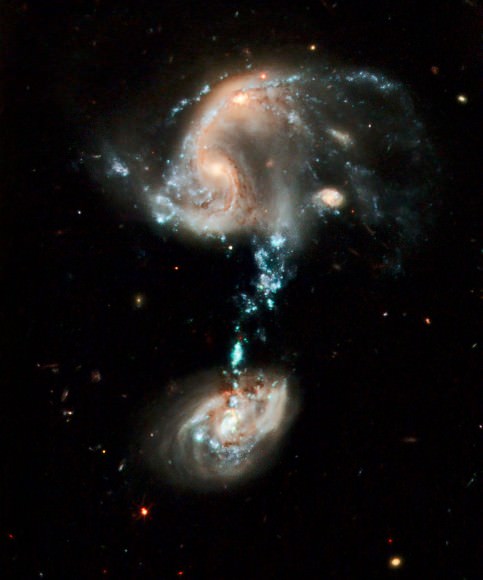Hubble, Renewed, Reinvigorated, Raring to Go
The stakes for the fifth, and final, Hubble servicing mission couldn't have been higher; not only were two new instruments to be installed (a relatively straight-forward task), not only was much of key infrastructure to be replaced (batteries, fine-guidance sensors, thermal blankets), but intricate repairs had to be performed on the two most complicated instruments (ACS and STIS), something not in the design, something difficult enough in a well-appointed lab on Earth much less done by astronauts in bulky space suits. The servicing mission was postponed, as it became clear that the work to be done was more extensive; but in May 2009 STS-125, involving five full days of space walks and 11 days in space, met all the objectives.
And a little under four months later, after extensive testing and calibration, the Hubble was back in the astronomy business.
This image is the Hubble Ultra-Deep Field (HUDF), as seen by WFC3 in the infrared (now that Hubble Zoo is live, you will have a chance to analyze fields like this yourself!)
MACS J0025.4-1222(right) is not as well known as the Bullet Cluster, but perhaps it should be. One of the really big, open questions in astronomy today is the nature of dark matter; observations of the Bullet Cluster point to dark matter being a form of matter that does not interact with normal (baryonic) matter, except gravitationally. But perhaps the Bullet Clusteris just an anomaly, or perhaps we don't really understand what's going on? In astronomy, as in all science, independent verification is key, and what better way to provide that, for dark matter, than to observe another interacting cluster? "Revealing the Properties of Dark Matter in the Merging Cluster MACS J0025.4-1222" is the paper to read, and Hubble's ACS provided many of the key observations.
A direct image of an exoplanet, and an estimate of its orbit; the coronagraph on ACS blocked out most of the light of Fomalhaut so its planet – Fomalhaut b – could be seen.
WFPC2 was removed during SM4 (and replaced by WFC3); this was Hubble's workhorse camera for some 16 years, the camera which just kept on working. It is fitting then that one of its last images is of Arp 194, dubbed 'the fountain of youth'.
Happy Birthday Hubble! SOURSCE : http://www.universetoday.com/2010/04/23/hubble-renewed-reinvigorated-raring-to-go/#more-63443




No comments:
Post a Comment